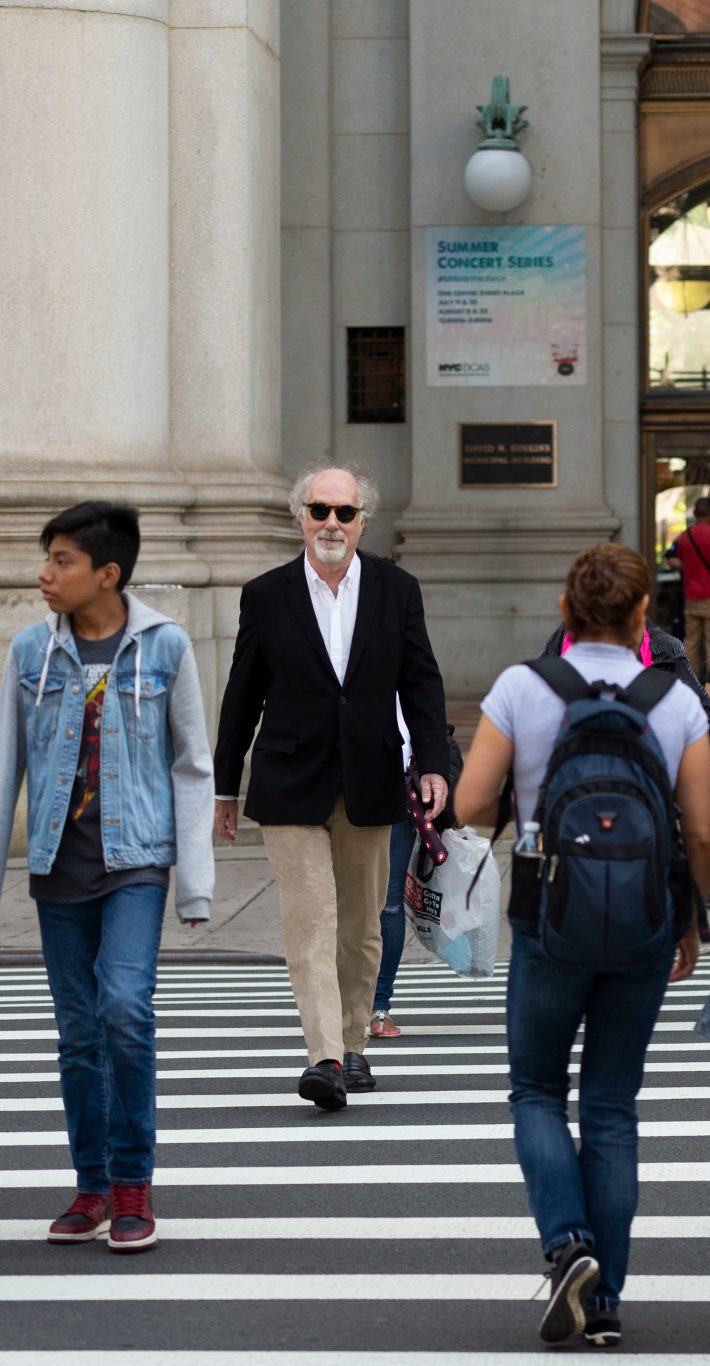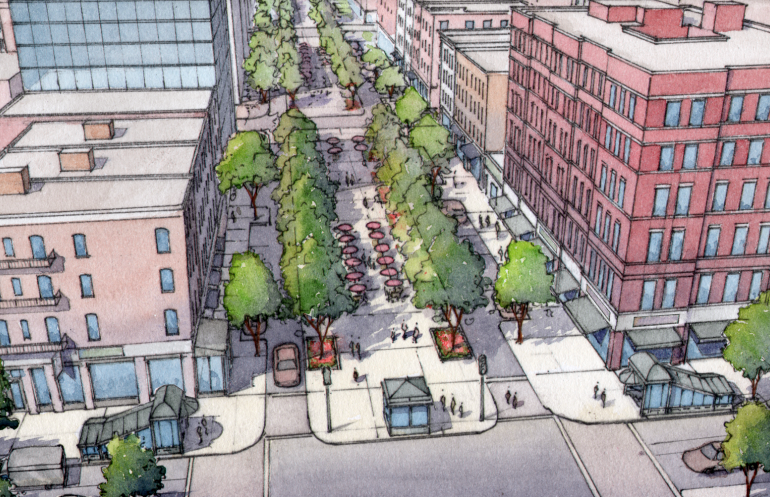Gov. Cuomo and City Council Speaker Corey Johnson called for making New York City streets safer for pedestrians and social distancing while we all stay close to home. Mayor de Blasio responded with a pilot program to open more space for pedestrians.
We can do more. We should use this time when traffic is light to work on ideas for safer, quieter, and more pleasant streets for pedestrians and cyclists now and in the future. During this COVID-19 crisis, we can act on ideas that are great for the long-term health of the city. Specifically, let's make some of our quiet side-streets primarily for cyclists and walkers.
'Quiet streets'
These low-traffic streets could be part of a network of "Quiet Streets" that makes it easy to move around New York. When we start going back to work, we'll have a precedent for walking and cycling routes separated from the most congested, polluted, and dangerous streets.

New York City has more than 450 miles of protected bike lanes. They save lives, and they encourage people to ride bikes who would otherwise be afraid to ride on city streets. But going forward, we can do better.
Most of the protected lanes are on one-way, suburban-style transportation corridors, designed to move traffic through the city. That traffic produces a lot of pollution. Riding in their dirty air is unhealthy.
There is also an inherent, potentially fatal conflict between two-ton machines moving at 30 miles per hour and people on foot and on bicycles. You see this at the intersections, where traffic and people share the space. The intersections are the places where drivers most commonly hit and kill New Yorkers who are not in cars. Left-turn lanes make the crossings especially deadly.
The "Quiet Street" routes wouldn't have to be car-free. Most would be on residential streets where people sometimes want vehicular access to their houses and apartments. There are a number of ways to design streets that favor pedestrians over cars. The short-term, immediate solutions would be different than the final designs.
The "Quiet Street" network should provide routes both within the boroughs and from the outer boroughs into Manhattan. In Manhattan, of course, most of the north-south streets are wide avenues that are all designed to move traffic in one direction.
Breaking the car culture
But even before we had ever heard of COVID-19, several city officials, including Speaker Johnson, were talking about "breaking the car culture" — especially in Manhattan, where three-quarters of the households don't own a car.
To break the car culture, we need to stop treating every avenue like a suburban arterial. Fifth and Sixth Avenues should be streets for people, where cars are guests rather than "Kings of the Road." Smaller north-south streets, such as Irving Place, University Place, and Lafayette Street are obvious candidates to become more people-friendly.
Urban design
Good urban design is place-friendly. Places with the most people, like Midtown, need fewer cars and more room for people. In other parts of Manhattan, the adjacent buildings and blocks have a different character, and the character of Fifth Avenue might change, too.
Council Member Ydanis Rodriquez, the head of the Transportation Committee, has proposed that we immediately make Broadway car-free from the Battery to Washington Heights. That's a good idea. But the nature of Broadway changes as it cuts through the grid.
Below Columbus Circle, it's narrow, one of the most logical north-south streets to be car-free. Above Columbus Circle, Broadway is wide, divided in two with a planted median. While we stay at home, one side could have no cars, while the other could have light traffic, giving delivery trucks access to all the grocery and hardware stores.
In the long run, Broadway north of Columbus Circle could be a pleasant street with light traffic on both sides, while Columbus Avenue or West End Avenue might be the best streets for little or no traffic. These are just quick ideas. A broad study of traffic on the Manhattan grid might have different and better long-term solutions for breaking the car culture.
These are not new ideas. When Norman Mailer ran for Mayor in 1969, he proposed a car-free Manhattan. Fifty years later, breaking the car culture, pedestrian plazas, and bike lanes are all things more and more New Yorkers want now.
European cities have many good models on how to make better streets for people. Some cities, like Amsterdam and Copenhagen, started working on this back when Mailer was talking about it. Others, like London and Brussels, came to the game much later, but they are making rapid progress. London has a network of "Cycle Superhighways" and a growing network of "Quietways."
Notably, when London offered a Nike executive the job of cycling commissioner, he replied that he would only take the job if they made it "walking & cycling commissioner" — so at the same time that London's planners, engineers, and urban designers make new bikeways, they think about making London the best city in Europe for walking.
Instead of always thinking of street design as transportation planning, they also work on place-making, designing streets where people will want to get out of their cars. It's what Italians call the "Slow City."
Now is a good time to plan for a "Slow New York."
John Massengale is an architect and urban designer. Follow him on Twitter @jmassengale.






